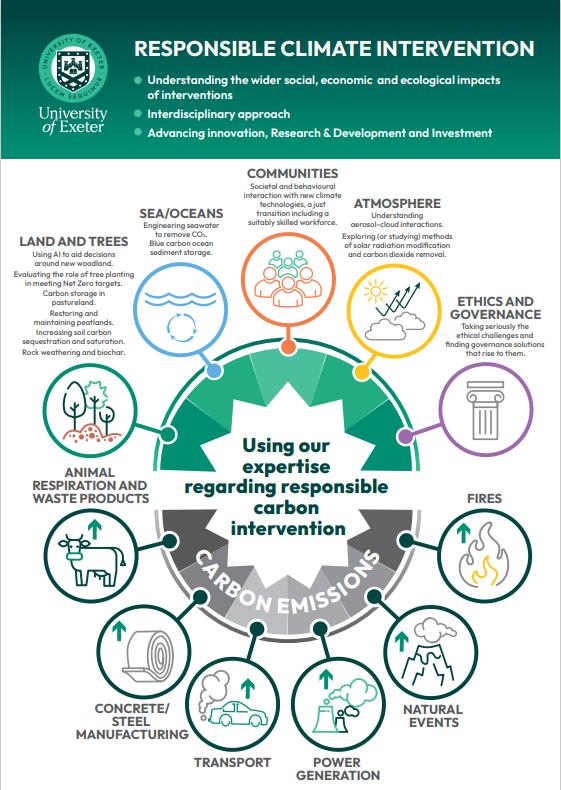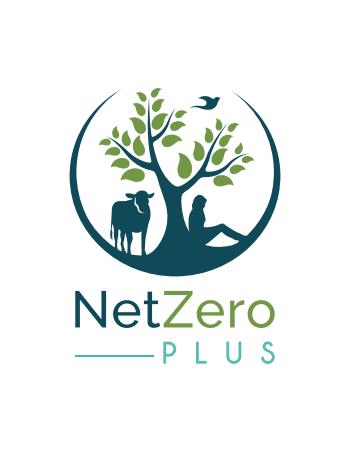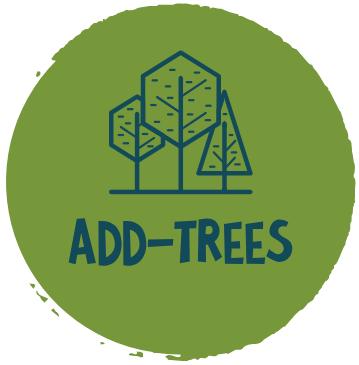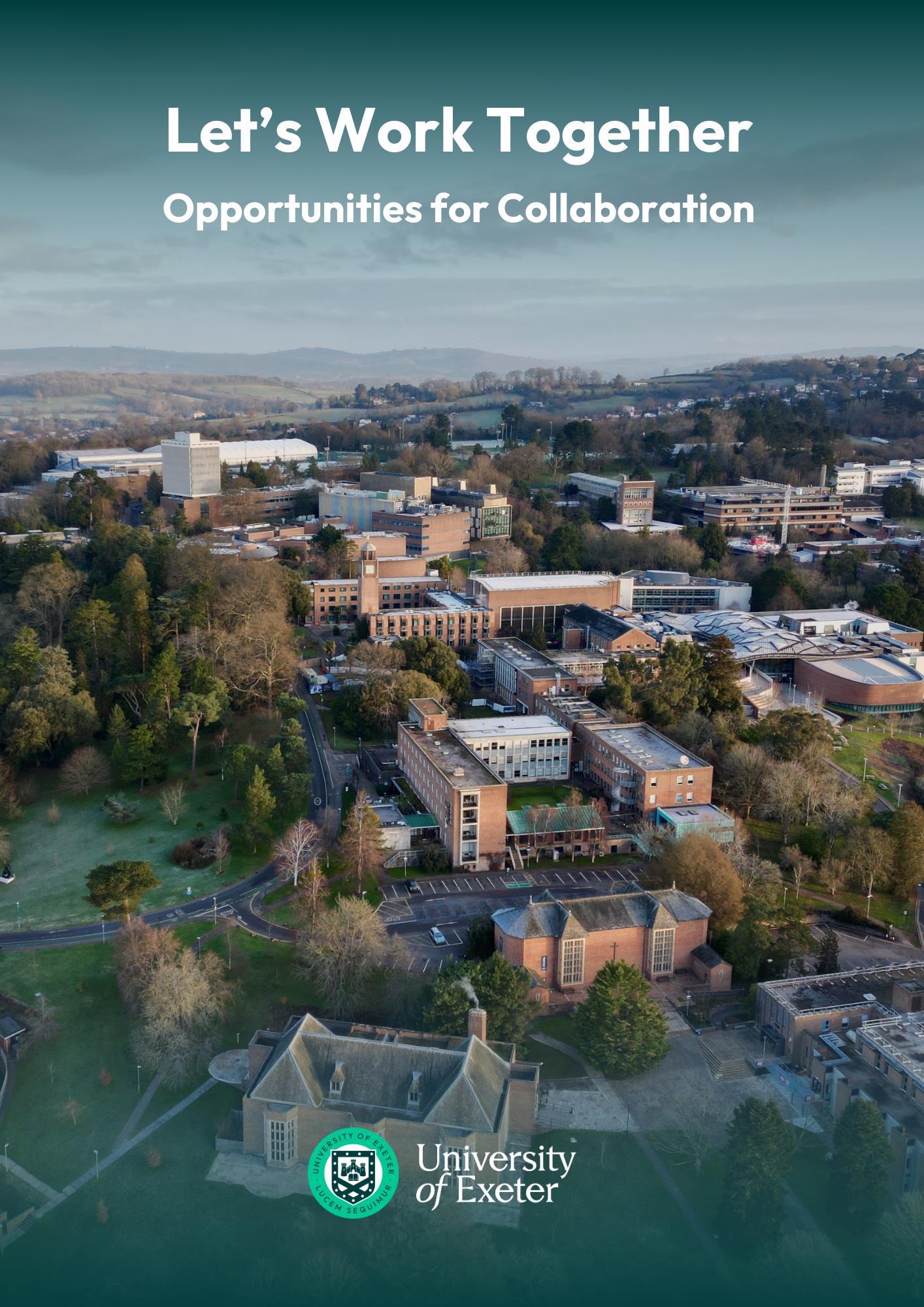




TheUniversityofExeter’sstrongleadershipinclimate,ecologyand geologyandwiderdisciplineshaveinrecentyearsfacilitatedthe developmentandgrowthofawiderangeofinterdisciplinaryresearch projectsandprogrammes.Ourleadingexpertiseinthisareais supportingexplorationofclimatestabilitythroughdirectcarboncapture andmoreindirectmultifunctionalnature-basedsolutions,alongwith explorationofsocietalperspectivesaroundcarbondioxideremovaland othersuchclimateinterventions.
Thisworkbringstogethercapabilities,disciplines,andpartnershipsin newwaystodriveforwardsolutionsthatworkforclimate,nature,people andbusiness.Thisbrochureisaguidetoourexistingterrestrial,marinebasedtechnologicalandnature-basedresearchandcommercialisation activityinthisbroadandrapidlyevolvingsector. Itisintendedforawide rangeofaudiencesfromstudents,funders,businesses,academicsand thosewishingtofindoutmoreaboutresponsibleclimateintervention.
ResponsibleClimateIntervention:
• SocialSciencesandClimateIntervention
• Technology-BasedCarbonDioxideRemoval
• SolarRadiationManagement
CombattingClimateChange:
• EmergingOpportunities–mineralsandmining,CCUS
• Nature-BasedCarbonDioxideRemoval
LetsWorkTogether:
• OpportunitiesforCollaboration

Climatechangecouldcausetheglobaltemperaturetoincreasebyseveral degreesbytheendofthecenturywithcatastrophicconsequences.
Thesolutiontothisproblemistoceasetheburningoffossilfuelsandto eliminateexcessgreenhousegasesfromtheatmosphere.However,lowering atmosphericgreenhousegaslevels–evenunderthemostaggressive scenarios–maynothappenfastenoughtoavoiddevastatingclimateimpacts, includingtheonsetoftippingpointsintheclimatesystem.
TheIntergovernmentalPanelonClimateChange’s(IPCC)assessmentfound: Globalwarminginexcessof1.5°Cabovepre-industriallevelsisnow likely(evenifincreasedactionallowstheworldtoachievenetzero emissionsby2040),andthepaceandscaleofwhathasbeendoneso far,andcurrentplans,areinsufficienttotackleclimatechange: “thereisincreasingdebateastowhethersocietymustbuytimeto decarbonisebymanipulatingcertainvariablestoreduceglobal temperaturesonashort-to-mediumtermbasis”
Thesefactshaveledtoproposalsformethodstoremovegreenhousegases fromtheatmosphereand/ortoactivelycooltheEarthinordertobuytimeto decarboniseand/oroffsetresidualgreenhousegasemissions.Theseproposals arecontroversial,andtherehasbeenconsiderabledebatearoundtherisks andbenefitstheycarry.
Thiscomesagainstabackgroundofconcernaroundclimatetippingpoints (abruptalterationsintheEarth’sclimatesystem),whichmayleadtoessentially irreversibledisruptivechangesonaregionalorglobalscaleiftheglobal temperatureexceedscertainthresholdsforanylengthoftime.Examplesof suchtippingpointsincludethemeltingoftheArcticwinterseaice,diebackof theAmazonrainforestswithconsequentecosystemloss,andcollapseofthe majorland-basedicesheets,leadingtosignificantglobalsealevelrises.
Carbondioxideremoval(CDR)ishumanactivitythatcapturesCO₂fromthe atmosphereandstoresitfordecadestomillennia.
Alongsiderapidlyreducinggreenhousegasemissions,thescalingupofnovelCDR andtheexpansionofland-basedCDRcanbeseenasanimportantcomplementto reducinggreenhousegasesthroughreducedrelianceonfossilfuelsandeliminating carbonemissionsifwearetomeetthetemperaturegoaloftheParisAgreement withinthetimescalessetout.
TherearemanyCDRmethods,whichcoveravarietyofwaystocaptureandstore CO₂.Thesemethodshavedifferentlevelsofreadiness,potentialanddurability.
Toavoidtheworstimpactsofclimatechange,wemustdramaticallyreduceemissions ofCO2andothergreenhousegases.AstheGlobalCarbonBudgethasfound,if currentemissionslevelspersist,thereisa50%chancethatglobalwarmingcouldbe exceededinsevenyears.Emissionsmustbereducedasfastaspossible–butresidual andhistoricalemissionsalsoneedtobemitigatedifwearetosecureapathwaytoa safeclimate.

Alow-carbonfuturewillbeverymineralintensivebecausecleanenergytechnologies needmorematerialsthanfossil-fuel-basedelectricitygenerationtechnologies.
Weknowthatgreaterambitiononclimatechangegoals(1.5°C–2.0°Corbelow),as outlinedbytheParisAgreement,requiresinstallingmoreofthesetechnologiesand willthereforeleadtoalargermaterialfootprint.OurworkwiththeCamborneSchool ofMineswillbeessentialtodevelopnewmethodsandunderstandinginthiskeyarea –thisisoutlinedinour“EmergingOpportunities”section.

Globally,around2GtCO₂ peryearofCDRistakingplacealready.Almostallofthis comesfromconventionalCDRmethods.NovelCDRmethodscontribute1.3million tons(0.0013Gt)ofCO₂ removalperyear.Thatislessthan0.1%oftotalCDR,but novelmethodsaregrowingmorerapidlythanconventionalmethods,andthe permanenceandverifiabilityofremovalofmanyofthesenoveltechniquesappears tobeincreasinglydemandedbythosepurchasingorotherwisefundingcarbon removal.
IndicatorsofinnovationshowthatCDRactivityisgenerallyintensifying,although withsomerecentslowdowns.Indicatorsofresearch,inventionandinvestmentin startupcompaniesshowevidenceofdiversificationacrossCDRmethods.However, currentdeploymentandnationalproposalsforfutureimplementationaremore concentratedonafewconventionalmethods.Inaddition,manymodelledmitigation scenariosstillrepresentonlyalimitedsetofCDRmethods.

TherecontinuestobeagapbetweentheamountofCDRinscenariosthatmeet theParistemperaturegoalandtheamountofCDRinnationalproposals.The gapcanbeclosedbyrapidlyreducingemissions,scalingupaportfolioofboth conventionalandnovelCDRmethods,andexplicitlyintegratingsustainability considerationsintoCDRpolicy.

AccordingtoTheStateofCarbonDioxideRemoval2024,thetruescaleofCDR requiredwillbedictatedbyhowrapidlydirectdecarbonizationalternativesscale, whattheenergydemandwillbe,whatCDRcostreductionsoccur,andthebarriersto futuredeployment.Therefore,itmakessensetoplanforarangeofscenariosover thenextdecadeandidentifythepathwaysthatwillleadtothebestoptionstoscale CDRinthefuture.Thesepathwaysinclude:bringingtechnologytocommercial demonstration,creatingrobustmonitoring,reportingandverification(MRV) standardsandtechnology,creatingpoliciestoincentivizedemandatsmallbut meaningfulscale.
Alongsidethis,webelieveintheimportanceofdevelopingcommunityandworkforce benefitmodelsthattakeintoaccounttheimpactsofsuchchangesandthe perspectivesofcommunitiesratherthanthinkingsolelyofinterventionfirst.
Thisapproachneednotcompeteagainstmitigationapproachesthataregrowing andgainingmomentum.Infact,theycouldgiveusadecadetosharpenourfocuson howmuchCDRwetrulyneedtodesignall-ineffortsforeffectivedeploymentpolicies inthefuture.



Takingresponsibleactiononclimatechangemeanstakingstepsthatpromote thepublicinterest,understoodwidely,nowandintothefuture.The requirementtotakearesponsibleapproachisparticularlyimportantwith respecttoclimateintervention,giventhepotentialimpactofsuch interventions,themanyuncertaintiesstilltoberesolved,andthepublic acceptabilityofR&Dinthisarea.
Climateinterventionraisesfundamentalethical, political,andculturalquestionsthatmustbe addressedintandemwithscientificresearch,and throughdialoguebetweenresearchersinthesocial andnaturalsciences.Exeter’sworld-leading environmentalsocialscienceresearchersare workingwithclimatescientiststoensureR&Din climateinterventionisinformedbythebest approachestodemocraticpublicdeliberationabout thevalues,visions,andoptionsembeddedin differenttechnologicalfutures.Theseapproaches canbringtogetherexpertsandpublicsindialogue overquestionsraisedbyclimateintervention,related tosocialjustice,power,knowledge,andhumanity’s placeinnature.Thisdialogueisvitaltoresponsible decision-makingabouttheunavoidablechallenges andtrade-offsthatmustbefacedifclimate interventionR&Dprogresses.

Eachtechnologyforclimateinterventionwould,ifdeployed,createadifferent worldforfuturepeople.Thus,climateintervention–includingearlystage research-raisesfundamentalquestionsaboutwhatweinthepresentoweto futurepeople,andperhapsalsotothenaturalworldmorebroadly.Theseare ethicalquestions,buttheyalsoraisepolitical,economicandsocialquestions:if wecanagreeonanethicalvisionofafutureworldwewanttobequeath throughclimateintervention,howcanwegetfromheretothere?Whatwould
havetochange–politically,economically,socially,andatglobalscales–forus tobeconfidentthatclimateinterventionR&Dbeingdonenowisresponsiblein thelightofthatethicalvision?
Wearecommittedtoworkingacrossmultipledisciplines,andwithexternal partners,tofocusourresearchonethicallysoundsolutionstoimprovethe worldforourdescendants.
Wefacemultipleenvironmentalcrises.Climatechangeisaccelerating,biodiversityisin freefall,plasticsareeverywhere,andsoilsaredepleted.Inourresearch,wetreatthesecrises asfundamentallysocial,political,andethical,andofparticularconcernfroman intergenerationalperspective:futurepeopleareentirelyvulnerabletoourpresentchoices, andourpresentfailurestopreventmultipleecologicaldisastersraisemultiplequestionsof justicethatweaddressinourresearch.Wearecommittedtoworkingacrossmultiple disciplines,andwithexternalpartners,tofocusourresearchonethicallysoundsolutionsto improvetheworldforourdescendants.
Findoutmore>>
ACCESSisafundedprogrammeofworkproviding leadershiponthesocialsciencecontributionto tacklingandsolvingarangeofclimateand environmentalproblems.Werecognisethat technologyaloneisnotenough.Andweare workingtoshareourunderstandingofhow people,oursocietiesandoursystemsneedto changeandadapttocreateahealthier environmentandmeetournetzerogoals.Weareprovidinginsightstofindfreshthinkingand newsolutionstosupportthetransitiontoasustainableandbiodiverseenvironmentandanet zerosociety.
Findoutmore>>

RENEWisafive-yearpartnershipprogramme, deliveredinpartnershipwiththeNationalTrust,to developsolutionstooneofthemajorenvironmental challengesforhumankind:therenewalofbiodiversity.

Promotingurbanliveabilitythroughfostering naturebasedsolutionsinEuropeandChina,using evidencebasedtoolsandimprovedurban governanceacceleratingthetransitiontowards equitablegreenandhealthycities.
Findoutmore>>

TheCentreforRuralPolicyResearch(CRPR)isan inter-disciplinaryteamofsocialscientistsfocussingon social,politicalandeconomicissuesattheintersection ofland,theenvironment,farmingandfoodsystems. WhilemuchofourresearchisconductedintheUnited Kingdom,wealsohaveaninterestintheseissues aroundtheworld,especiallyinEurope.

Bringingtogetherdisciplineswhoareunitedbyacommon concernandchallenge:theworkoftheartsandhumanities incurrentdebatesaroundenvironmentandsustainability, culturesandcommunities,narrativeandrepresentation.It aimstopromoteresearchanddiscussionconcerning historicalandculturalnarrativesof‘nature’andnatural resources,landscapeandplace,culturalknowledgesand values.
Findoutmore>>

Evaluatesthedifferentwaysthatcitizenvoicesare heardandsilencedthroughparticipation,protest, andoppressionindifferentpoliticalsystemsand processesofgovernance.Akeythemeis EnvironmentalJustice.
Findoutmore>>

Voice,Participation&Governance(VPG)theme isinterested,principally,inhowcitizensmake theirvoicesheardandparticipateinpublic debate,decision-makingandsocialresistance. Weevaluatethedifferentwayscitizens'voices areheard,encouragedandsilencedthrough participation,protestandoppressionindifferent systemsofgovernance;including,forexample, howgovernmentstrytosilencetheircriticsor removespacesforcriticaldissent,howtheyexacerbateinequalitiesinpoliticalvoice,and whattheycando(oraredoing)toreducethoseinequalities.Wealsostudythewaysinwhich citizens'participationisevolvinginresponsetobothsocialchange-suchasthedevelopment oftechnologyorchanginginfluenceofsocialinstitutions-andpoliticalchange-suchas whengovernment'sfrustratestrikeactionbyunionsorprotests.
Findoutmore>>

Technologicaladvancesarerequired todecarbonise,butwewillbeunable todeploytheserapidlyandfairly withouteffectivepolicyandregulation, communityacceptanceofthenew technologies,andasuitablyskilled workforce.IDRIC’swhole-systems approachmeansthatoursocial scienceresearchaddressesallthese issuesandacceleratesindustrial decarbonisationwhilstensuringajust transitiontonetzero

Theseprojectsfocusontranslatingthegreengrowthvisionintofairerlocaldevelopment andsocialsupportfortechnologydevelopment,including:
• Deliveryofaplace-basedjusttransitioninindustrialclusters(projectIA3.1)
ThePlace-basedJustTransitionFrameworkforstakeholderswillbecrucialtothe success(orotherwise)offuturedeployments ofcarbontechnologies
• JusttransitionsforindustrialdecarbonisationintheUK(projectMIP2.4)
• NetZeroSenseofPlace(projectMIP3.4)
• ACCESS


TheSeaCUREproject,inpartnershipwithBrunelUniversityand PlymouthMarineLaboratory,isdevelopingunderstandingand testinghowwemightengineerseawatertoremoveCO2from theatmosphere.
TheSeaCUREsystemmakesuseofthenaturalbehaviourofthecarboncycle-the‘sucking’ of CO2from the atmosphere in response to the atmosphere-ocean CO2concentration differencegeneratedbyrisingatmosphericCO2levels.SeaCUREmassivelyacceleratesthis processbystrippingaround90%oftheCO2outoftheseawatersothattheCO2concentration differencebetweenairandwaterisenhanced,andtheamountofCO2 removedfromthe atmosphere is dramatically increased. Importantly, natural concentrations of CO2in seawateraremuchhigherthanthoseinair,suchthatprocessing1cubicmetreofseawateris equivalenttoprocessing150cubicmetresofair.ThismeansthatSeaCUREofferspotential benefitscomparedtoapproachesremovingcarbondirectlyfromtheair.
SeaCUREbuildsoncollaborationbetweenworldleadingacademicexperts(inoceancarbon andclimatemonitoringandmodelling,chemicalengineering,greeninfrastructureandlife cycle analysis) and engineering and technology-focused SMEs with expertise in carbon removal,waterprocessingandplantdesignandbuild.
SeaCURE’s marine-based greenhouse gas removal (GGR) pilot plant aims to be the first continuouslyoperatingDirectOceanCaptureplantintheworld.Itwillshedlighton(andwe hope,helpsolve)thechallengesassociatedundertakingseawaterCO2removalatscale As wellasaddressingtheengineeringchallenges,SeaCUREisdevelopinganddemonstratingthe approach to verify seawater carbon removal, and understanding the potential marine ecosystemimpactsoftheseapproaches,andwhatwouldneedtobedonetoavoidthem.
SeaCURE hasdeveloped and demonstrated thecomponentsofamarine-based Negative EmissionsTechnology(NET),withthepotentialtobeappliedatverylargescales.Thesystem makesuseofthenaturalbehaviourofthecarboncycle,i.e.the‘sucking’ofCO2outofthe
atmosphereinresponsetotheatmosphere-oceandifferenceinCO2concentrationgenerated by rising atmospheric CO2concentrations. We are now designing and building a demonstrationplantintheUKwhichwilloperateatarateof100tonnesofCO2removalfrom theatmosphereperyear,developingandtestingstateof-the-artapproachestoverifythat CO2removal, and carefully building the evidence based required for larger-scale plant deployment.
SeaCUREisacollaborationbetweenworldleadingacademicexperts(inoceancarbonand climatemonitoringandmodelling,greeninfrastructure,lifecycleanalysisandmarinelaw) and engineering and technology-focused SMEs with expertise in carbon removal, water processingandplantdesignandbuild.

BybringingseawaterintotheSeaCUREplant,thendroppingitspHwecanfacilitatethe rapidremovalofover90%ofthatwater’sdissolvedcarbon.WetaketheliberatedCO2to around99%puritywhereitisavailableforarangeofutilisationcasesandforgeological storage.IncreasingthepHofthewaterandreleasingittothesurfaceocean,thenatural exchangeofCO2betweentheoceanandatmospheredoestherest,andcarbonissuckedout oftheatmosphereuntilthereleasedseawaterischemicallyindistinguishablefromthatthat wassuckedintotheplant–andtheatmosphereisonestepbacktowardswhereitwas beforewestartedburningfossilfuels.
SeaCUREpresentsopportunitiestoscalethisapproachoffshore,mitigatingtheland-use challengesthatarepotentialbarriersforothermethodsofCO2removal.
Formoreinformation:
• Contact: p.halloran@exeter.ac.uk
• VisittheSeaCUREwebsite

Weknowthisisacontentiousarea. AstheIPCCpointout:“AlthoughsomeSRMmeasures maybetheoreticallyeffectiveinreducinganovershoot,theyfacelargeuncertaintiesand knowledgegapsaswellassubstantialrisksandinstitutionalandsocialconstraintsto deploymentrelatedtogovernance,ethics,andimpactsonsustainabledevelopment”.
Solarradiationmodification(SRM)–alsodiscussedinthecontextofgeoengineering–ispart ofasetofclimate technologiesthatmaybeusedtoprotecttheearthfromtheadvanced stagesofglobalwarming(IPCC2021)
Emissionreduction,evencombinedwithlarge-scalecarbondioxideremoval(CDR),maynot besufficienttoavoidsevereclimateimpacts.Theremaybeinadequateambitiontoreduce greenhousegasemissions,climatesensitivitymaybehigh,theimpactsatagiven temperaturetargetmaybeworsethanexpected,orsomecombinationofallthree.Forthese reasons,solarradiationmodification(SRM)isbeingdiscussedasapotentialadditional elementofanoverallportfolioofoptionstoaddressclimatechange. Inadditiontoavoiding, forexample,globalwarminginexcessof1.5°Cabovethepreindustrialera,SRMistheonly optionthatcouldrapidlyreducetemperaturesifanytargetweredeemedinsufficient.
Thereforeourworkisexploratoryandseekstonotjustifytheapproach,buttoexaminethe efficacyandmethodsusedtoensurethatIFsuchanapproachweretobeconsideredfor implementation,wewoulddosobasedonfirmscientificunderstanding.
SRMproposalswouldreflectasmallpercentageofsunlightbacktospace.Thisprovidesa surfacecoolingeffectandcouldpotentiallyreducesomeofthedetrimentalimpactsof climatechange.ExamplesofSRMincludebrighteningcloudsovertheoceanandinjecting reflectiveaerosols,ortheirgaseousprecursors,intothestratosphere.Researchersatthe UniversityofExeterusestate-of-the-artclimatemodelstoevaluatethesemethodsandtheir impactontheclimatesystem.Highlightsofthisworkincludecontributionstothe GeoEngineeringModelIntercomparisonProject(GeoMIP),morethan35UoEpeer-reviewed papersandleadauthorcontributionstorecentMontrealProtocol,UNEnvironmentProgram andWorldClimateResearchProgrammereports.

Source:NationalAcademiesofSciences,Engineering&Medicine(2021).ReflectingSunlight: RecommendationsforSolarGeoengineeringResearchandRe-searchGovernance.Washington,D.C.: NationalAcademiesPress.ISBN:978-0-309-67605-2.DOI:10.17226/25762

Thefocusofourresearchgroupisatmosphericaerosolsandtheirrolesandimpacts inclimate.Atmosphericaerosolsconsistofmicroscopicparticlessuspendedinthe troposphereandstratosphere.Theyinteractwithbothsolarandterrestrial radiation(aerosol-radiation-interactions,ARI)andwithclouds(aerosol-cloudinteractions,ACI).Aerosolscanalsoplayakeyroleinclimatefeedbacks.
Theinteractionsbetweenaerosols,cloudsandradiationarehighlightedasthekey climateuncertaintiesintherecentIntergovernmentalPanelonClimateChange (IPCC)assessmentreport.ARIandACIarebothveryuncertain.Whetheraerosols coolorheattheatmospherethroughARIdependsstronglyontheirabsorption properties,butalsoupontheirhorizontalandverticalspatialdistribution.Aerosol coolingthroughACIishighlyuncertainbecauseofthechallengeinrepresenting complexaerosolandcloudmicrophysicalinteractions,manyofwhichcannotbe adequatelyrepresentedinrelativelycoarseresolutionglobalclimatemodels.

MODISTERRAreal-colourimage(22ndJune2019)oftheashcloudfromtheeruptionofRaikokevolcano,as seeninthecentreofthephoto.Ship-tracksarealsoreadilydiscernibleasline-featuresofbrightercloudinthe stratocumuluscloudsintheSEquadrantoftheimage.Accuratelyparameterisinginteractionsbetween aerosolsandcloudsclimatemodelsisextremelychallenging.
Imagecredit-CloudpatternssouthoftheAleutianIslands(takenfromNASAWorldview).
Toimproveourunderstandingofaerosols,clouds,andclimateinteractions,our studiesinvolveairborneandsurface-basedin-situmeasurements,retrievalsof aerosolandcloudphysicalandopticalpropertiesfromsatelliteinstrumentationand numericalsimulationacrossarangeofscalesbyusingprocess-scalemodelsaswell asregionalandglobalmeteorologicalandclimatemodels.
Findoutmore>>







CamborneSchoolofMines(CSM)isacombinedgeoscienceandminingschool.CSM takesinterdisciplinaryresearchandeducationinfundamentalandappliedaspectsof geoscience,georesourcesandmininghelpingtoaddressenvironmentalchallenges suchastheenergytransition,netzeroandresponsibleuseofnaturalresourcessuch ascriticalminerals.
Low-carbontechnologies,particularlysolarphotovoltaic(PV),wind,andgeothermal,are moremineralintensiverelativetofossilfueltechnologies.Forexample,about3,000solar panelsareneededfor1megawatt(MW)ofcapacityofsolarPV. Seeprojectionsbelow... Theseprojectionsmaybeconservativeandwillmostlikelybelargerina1.50C-degree scenario,whichdemandssolutionstobeimplementedfaster,andatalargerscale.

Criticalmineralsarethosethathavehigheconomicimportance,arerequiredforthe transitiontoanetzeroeconomybutareatriskofsupplydisruption.Theyareessentialfor the‘'green’technologiesthatwillallowthetranstiontonetzero.However,current productionisnotenoughtomeetfuturedemand.Forexample,productionofgraphite, lithium,andcobaltwillneedtobesignificantlyrampedupbymorethan450percentby 2050—from2018levels—tomeetdemandfromenergystoragetechnologies.
Becauseofthematerialintensityoflow-carbontechnologies,anypotentialshortagesin mineralsupplycouldimpactthespeedandscaleatwhichcertaintechnologiesmaybe deployedglobally.
ProfessorFrancesWall,ProfessorofAppliedMineralogyattheCamborneSchoolofMines, providedadviceforthekeyreport,ResiliencefortheFuture:TheUnitedKingdom’sCritical MineralsStrategy,publishedJuly2022.
Thestrategycontainsthreemainactions:toaccelerategrowthoftheUK’sdomestic capabilities;collaboratewithinternationalpartners;andenhanceinternationalmarketsto makethemmoreresponsive,transparentandresponsible.ItalsooutlinesGovernmentplans toworkwithCamborneSchoolofMinestoboostitspositionasaworld-leadingminingschool andlaunchadegreeapprenticeshipinminingengineeringin2023.

Miningiscriticaltoachievingamoresustainablefuture.ReplacingBritain’s31.5millionpetrol anddieselvehicleswithelectricalternativeswilltaketwicethecurrentannualworld productionofcobalt,andayear’sproductionofneodymium.
Weneedtoextractthesecriticalmineralsresponsiblyandsustainablytoreachournetzero ambitions.CamborneSchoolofMines(CSM)istrainingthefutureleadersofthemining industry.Studentsaretaughtresponsibleandsustainableminingpractices,frommine reclamationtocarboncapture.


Understandinghowcarbonisstoredintheseascapeandseafloor


TheConvexSeascapeSurveyisapioneeringcollaborationofworld-leadingscientists workingtoquantifyandunderstandbluecarbonstoredinthecoastaloceanfloor, andtheeffectsofmarinelifeuponit.Wewilldelivernewreliableopen-sourcedata whichwilleducate,inspireandenableinformeddecisionsonoceanuse,toharness thepoweroftheseainthefightagainstclimatechange.
TheConvexSeascapeSurveyseekstoexplorehowtheoceanperformsitsvitalroleasthe world'slargest carbonsink. Over fiveyears,theproject willnot onlyscrutinisethecarbon lockedinthecontinentalshelfseabedsbutwillassesstheroleofoceanlifeoncarbonstorage, aswellasassessinghumaninfluencesonseabedcarbon.FundedbyConvexGroupLtd.,the projectisfacilitatedbyBlueMarineFoundation,withscienceledbytheUniversityofExeterin collaborationwithpartners.
Wewillidentifytheoriginsofcarbonontheworld’scontinentalshelvesandexplorehowithas accumulatedandalteredovertime,discoverwherethebiggeststoresarefound,molecularly fingerprintwheretheycamefrom,andputthesizeofthesecarbonstoresintocontextinthe globalcarboncycle.
Wewillmapthespreadofmultipledifferenthumanactivitiesdisturbingtheseabedovertwo andahalfcenturiestothepresentday.Byoverlayingdisturbancemapswithourmapsofthe distributionofcarbonintheseascape,andexperimentalmeasuresoftheconsequencesof bottom disturbance in the field and laboratory,we will identify historic and contemporary patternsofhumaninfluenceonbluecarbonanddetermineitsvulnerabilitytolossandrereleasetotheoceanandatmosphere.Wewilltherebymakequantitativelinksbetweenhuman pressuresontheseascapeandtheirimpactoncarbondioxideemissionsandidentifypotential managementoptionstoslowclimatechange.
Wewillstudyand monitor theeffectsonwildlifeand habitatsof protectionfrom seabeddisturbinghumaninfluencesatmultiplerepresentativelocationsworldwide.Wewillmeasure howlongittakesforcarboncaptureandburialtorecoverfollowingprotectionandquantify thecomplementarybenefitsofprotectedareastowildlifeandpeople,intermsofecosystem services,economicbenefitandincreasedhumanwellbeing. Findoutmore>>

TheCentreforResilienceinEnvironment,WaterandWaste(CREWW)wascreatedand fundedinpartnershipbetweentheUniversityofExeter,SouthWestWaterandResearch England.BasedonourStreathamCampus,CREWWhasbeenestablishedtoundertake researchintosomeofthemostpressingEnvironmentalchallengesinourtime.Namely,how wecanmanagepreciousnaturalresourcesinwayswhicharesustainableandresilientinthe faceofclimatechangeandpopulationgrowth. Bringingtogetherourbestmindsfromacrossmultipledisciplineswithindustryexpertsto discoversolutionsthatwillprotectthefutureofwaterresourcesinthefaceofclimatechange andpopulationgrowth.

Itsresearchhorizonswillfocusonthemostpressingresearchchallengesthatimpactupon theprovisionofsafeandresilientwaterandwasteservicesacrosstheUKandoverseas, bringingtogetherengineering,nature,economicandbehaviour-basedsolutionsthatdeliver multiplebenefitstoourbusinessoperations,theenvironment,societyandtheeconomy.
Peatlandsaregloballyimportantecosystemsthatofferusawidearrayofvaluableservices, suchasstoringcarbon,providingcleanwater,floodalleviation,supportingbiodiversity,while alsoprovidinghistoricalandrecreationalbenefits.Unfortunately,humanactivitieshave causedsignificantdamagetotheseecosystems,leadingtofunctionaldecline.Peatland restorationaimstoimprovethedegradedpeatlands'ecohydrologicalfunctionbyusing varioustechniquestochangehowwaterflowsthroughthem.However,thereisstillmuchto learnabouttheexactprocessesandratesofrecoveryafterrestoration,aswellas theunderstandingthemosteffectiverestorationmethods.
Buildingonadecadeofresearchcasestudiesatthe UniversityofExeter(UpstreamThinking1,Mire-on-theMoors)thisprojectcontinuestosupportand evaluatepeatlandrestorationincollaborationwith theSouthWestPeatlandPartnership.Throughcocreatingappliedresearchquestions,wehavedeveloped multipleexcitingresearchthreads.Theseinclude:using remotelysenseddataandmachinelearningtomappeat extentanddepthsintheSouthwest,UK.


Improvingourunderstandingofpeatextentsallowstheseimportantcarbonstorestobe betterprotected;monitoringvegetationcommunities,waterquality,hydrologyand greenhousegasemissionsusingaspace-for-timesubstitutionexperiment–buildingan understandingofwhatreasonabletrajectoriesand timescalesofecohydrologicalrecoveryarefor Dartmoor;andusingcuttingedgetechnologyto measurehigh-frequencycarbondioxideand methanefluxesindifferentvegetationcommunities –quantifyingtheirannualcarbonbalanceguides restorationtargets,whilemulti-yearcontinuous datacandescribefunctioninrelationtoclimatic drivers. Findoutmore>>
NetZeroPlusisfocusingonhowwemakethebestuseofour naturalresourcestomeetUKNetZeroCommitments.In particular,evaluatingtheroletreeplantingcanplayin meetingnetzerotargets,andexploringhowlandusemore widelycanbepartoftheanswertothechallengesfacing PeopleandNaturethiscentury.
TheNetZeroPlusteamworkwithpolicymakers,landowners andawholerangeofpartnerstoco-designresearchwhich helpusimproveourknowledgeandunderstandingoflanduseandhowchangesto UKlandusemighthaveconsequencesforthenaturalenvironment,greenhousegas emissionsandsequestration,foodandenergyproductionandsecurity,andawhole rangeofthingsthataffectpeopleandnature.Ourresearchincludes:

• Measuringgreenhousegasstoredintreesandsoilatnewandestablished Demonstratorsites
• Developingmethodologiesandappliedtechniquestobetterunderstandthe scienceandvalueofnaturalresources
• Workingwithdecisionmakerstoco-designinnovativedecisionsupporttools (seeADD-TREESinfo)whichcapturethesereal-worldconnections.
Findoutmore>>
ADD-TREESisapioneeringArtificial Intelligence(AI)researchprojectproviding innovativetechnologiesthatwillaidcrucial decisionsaboutlandusechange.

LedbyProfessorDanielWilliamson,ADDTREEShasafocusoninitiativestocreatenew woodlandsandforestswithawiderangeof objectives,includingidentifyingtherighttree intherightplaceattherighttimeto determine:whichtreespeciesshouldbe plantedtoabsorbgreenhousegasesnow; whichtreespecieswillberesilienttofuture climatechangeandwhichtreespecieswillberesilienttopestsanddiseases.Itaimsto feeddirectlyintotheUKGovernmentEnvironmentAct2021targetofplantinghalfa millionhectaresofnewtreestoincreasecarboncaptureandothergreenhousegases aspartoftheUK’sstrategytoachieveNetZeroby2050.
Throughfourinterlinkedworkpackages,researchersattheUniversityofExeterand UniversityCollegeLondonaredevelopinguser-bespokedigitaltwinsandco-creating decisionsupporttoolsdirectlywithandforpolicymakersandlargelandholders.Our engagedusersincludeDefra,MoD,NationalTrust,NetworkRail,ForestryEngland, NationalForestCompanyandtheWoodlandTrust.
Governments,companies,andindividualsareincreasinglyinvestingandtrustinginmethods ofremovingcarbonfromtheatmosphereinordertotackleclimatechange.Butwestilldon’t properlyunderstandhowimpactfulmanyofthesemethodsreallyare. TheCarbonStorage inPasturethroughEcologicalRestorationproject(CASPER)seekstoaddressthatknowledge gap,inrelationtosomespecificNature-basedSolutionsscenarios.
WorkinginExeterandinBrazil,theCASPERteamisstudyingwhathappensinsoilto encouragecarbonstorage,andhowlongcarbonwillstaythereonceit’sstored.CASPER aimstosubstantiallyadvanceunderstandingofhowplant-microbesoilinteractionsand agriculturalmanagementpracticesimpactthepotentialforcarbonsequestration.
CASPERisnovelbecauseitlinksresearchinto soilsciencetothechallengesfacedbylocal communitiesinthetropics,whenattemptingto implementrestorationandregenerative agricultureinareasofseverelydegradedland. Specifically,itaimstocreatelowcost, accessiblewaystoimproveproductivityandsoil carbonstorageusingnativeplants,andatthe sametimeimproveeconomicandsocial outcomesforsmallscalefarmers.
Researchtofindaffordablewaystostore carbon,inharmonywithnatureandlocal people,isvital.Throughthelabandfieldwork, CASPERwillprovidedemonstrationsitesanda bodyofscientificevidenceaboutmethodsof soilmanagementandrestoration.Thisis expectedtoevidencemethodsthatdon'twork, alongsidethehopetofindsolutionsthatare viable,economical,andstorecarbonforthe longterm.
EffectivesolutionstorestoreBrazil'svastareas ofdegradedlandcouldbenefitlocal communities,mitigateclimatechanges,and helptoconserveandprotectothernatural resourcesinBrazilsuchasgroundwater

Underutilised and degraded pastureland are most concentrated within the tropics. Within Brazil, the world’s largest tropical country, pasture covers 21.5% of the country. Land
managementoverthelastfewdecadeshasseverelydecreasedsoilfertilityandcarbonstocks inthesepasturelands,andasaconsequencemuchofthislandcannolongersupporteither agricultureorgrazing. Around54%ofBrazil’spastureareinmoderateorseverelydegraded condition,representingalmost1millionkm2(almosttwicethesizeofFrance).
In these degraded lands, invasive species often out compete native flora, changing the landscapeandmakingtherestorationofnativeecosystemsincreasinglydifficult. CASPER seekstodemonstrateaviablealternativetothisscenario,inwhichthesedegradedlandscould bemoreefficientlyrestoredandutilisedtoincreasecarbonstorage,biodiversityandsocial justice,whilstlimitingthepressuretodeforestnativetropicalhabitats.Duetothevastareas atstake,evenminorgainsinimprovingdegradedsoilsprovidehugepotentialforpositive biodiversityandsocietalimpacts,andincreasedsoilcarbonstorage.
The main areas under study between the University of Exeter scientists and our Brazilian partnersareintheAmazonarcofdeforestation,andasavannaareacalledtheCerrado.The CerradoisavastbiomewithasmanyplantspeciesasBrazil’sAmazonbutisoftenoverlooked inconservation,restorationandclimatepolicy.
TheteamattheUniversityofExeteriscomprisedof7co-investigators,allbasedwiththe Geographydepartment.Theirexpertisespanstropicalecosystemfunctionandtropicalplant diversity, soil science, biogeochemical cycles and greenhouse gas fluxes, microbiology, pasturelandmanagement,andtheimpact of land management practicesonbothcarbon storageandlocalcommunities.Collectively,theyhavemanyyearsofexperienceconducting researchinthetropics.
The 5-year programme involves significant lab-based work in Exeter and fieldwork experimentationinBrazil,workingwithlocalpartners,communitiesandlandmanagersinthe region.ThefieldworkwilltakeplaceacrossvariousbiomesinBrazilrangingfromtropicalrain foresttosavanna,inclosecollaborationwithresearchersfromthethreepartnerinstitutions.
• InstitutoOuroVerde(IOV)–anNGOfocusedonsocialparticipationasabasisfor sustainabledevelopment.
• UniversidadeEstadualdeCampinas(UNICAMP)–apublicresearchuniversityin SaoPaulo
• Empresa Brasileira de Pesquisa Agropecuária (EMBRAPA) – a state-owned researchcorporationaffiliatedwiththeBrazilianMinistryofAgriculture.
Theresearchwillcoverthreekeyareas.
• Identifyingthemechanismsthatcanpromotecarbonsequestrationinagricultural soils.
• Identifyingsolutionstoincreaseproductivityandsoilcarbonstorageindegraded Brazilianpasturesystemsusingnativeplants.
• Linksandsynthesisbetweenthesetwoelements.
TheExeterbasedlabworkwillfocusonmicrobialsequencingandanalysisofsoil/carbon interactions, within thecontext of growing varied plant species.Theaim is to providethe mechanisticdetailedunderstandingofplant,soilandcarboninteractions,whichcanthenbe appliedinthecontextoftheBrazilianpasturelands(alsowithpotentiallearningpointsforUK soils). Muchoftheworkwilltakeplaceinacontrolledlabenvironment,whichenablesthe isotopictracingofcarbonintosoilandstudyoftheresultinggreenhousegasfluxes,within varioussoil,microbiomeandplantcombinations.
TheworkinBrazilisconductedinpartnershipbetweenthethreeBrazilianorganisationsand membersoftheExeterteam. Areasofinvestigationinclude;thelegacyeffectofinvasive speciesandchemicalfertilizersonsoilchemistryandsoilmicrobialcommunities;theeffectof nativeplantfunctionaltraitsonsoilproperties;thepotentialoftreesforhydraulicliftofwater fromdeepsoillayers;theeffectofleguminousandnon-leguminoustreesonsoilcarbonand fertility; deep soil carbon stocks and the role of trees; the social and economic drivers of regenerativefoodproductionsystemsintheCerradoandAmazonia.
CASPERisfundedbyShell.IntheirrecentlypublishedEnergyTransitionStrategy(ETS)2024, Nature-based Solutions are shown as one of the key enablers for carbon abatement and removalintheoverallstrategyroadmap. CASPER stemsfrom theunderstandingthat the sciencebehindnetzeroisclear,asistheneedtoacceleratethephasingoutoffossilfuelsupply anddemand,transitiontorenewableenergyatscale,andinvestincarbondioxideremoval. ThisworkisattheheartoftheUniversityofExeter’sStrategy2030.High-qualitynaturebased solutions, independently verified to determine their carbon impact and social and biodiversitybenefits,willplayanimportantandnecessaryroleinmitigatingglobalemissions.
TheCASPERProjectprovidesaviableavenueforfacilitatingthescaleandpaceofchange required,withpotentialforrealworld,globalclimate,ecologicalandsocietalimpact.
Findoutmore>>

Quanterraofferscarbonandecosystemmonitoringfornature-based solutions,givingtheircustomersmoretimetofocusonecosystem management.FoundedinJan2021byDrRebeccaMitchell,DrRobert ClementandDrTimothyHill.


Wearenowdevelopinglow-costcarbonmonitoringtowersandsystemsto supportrealtimecarbonemissionMRV.
We’reworkingwithcommercialandacademicpartnerstopilotoursolutionaround theglobe.Ifyou’reinterestedinworkingwithus,eitherasapartner,customeror investor,we’dlovetohearfromyou.Pleasegetintouchbyemail:info@qtsys.com.
SeaweedGenerationisdevelopingtechnologytogrowseaweedsustainably andcheaply,makingitcommerciallyviabletosinkseaweedforbillion-tonnescalecarbondioxideremoval.


AlgaRay,sinksinvasiveseaweedintothedeepocean.
Bydoingthis,itnotonlylockscarbonawayforhundredsofyears,butalsoprevents environmentaldisasterscausedbytheseaweed(afloatingspeciescalledSargassum)whenit hitscoasts,whereitcanalsoseverelyimpacthumanhealthandlivelihoods.
Oursecondrobot,theAlgaVator,increasesautomationinseaweed cultivation.
TheAlgaVatorisdesignedtodecreasethecostofgrowingseaweed,sowecanuseitfor highvolumeproductssuchasanimalfeed,fertiliserandpackaging,orsinkitforcarbon dioxideremoval.
ForgeneralquestionsorinformationaboutSeaweedGeneration,pleasegetintouch withusviaemailatenquiries@seaweedgeneration.com.

TheUniversityofExeterhastheUK’stopfivemostinfluentialclimatescientists–allin thetop21intheworld(ReutersHotList).Intotal,wehaveover1,500researchand educationspecialistsworkingtodeliveragreenfuture.Ourexpertiseisexceptionally wide-ranging,coveringkeyareasfromclimaterisk,NetZero,decarbonisationand environmentalintelligencetocriticalminerals,renewableenergy,circulareconomy, naturerenewalandbiodiversity.
ProfPierreFriedlingsteinFRSattheUniversityofExeterleadsthedeliveryoftheannual GlobalCarbonBudgetreport.Thisisthemostcomprehensive‘stocktakeofglobalcarbon emissions.’TheGlobalCarbonBudgetOfficeisledbyProfessorPierreFriedlingsteinfrom theUniversityofExeter’sGlobalSystemsInstitutewiththesupportofmorethan100people from70organisationsin18countries.ProfessorPierreFriedlingsteinFRSattheUniversityof ExeterleadsthedeliveryoftheannualGlobalCarbonBudgetreport.Thisisthemost comprehensive‘stocktakeofglobalcarbonemissions.’TheGlobalCarbonBudgetOfficeis ledbyProfessorPierreFriedlingsteinfromtheUniversityofExeter’sGlobalSystemsInstitute withthesupportofmorethan100peoplefrom70organisationsin18countries.
Findoutmore>>
LedbyProfessorTimLenton,theglobaltippingpointsteamarebringinghopetotheclimate crisis,withresearchintothe‘positivetippingpoints’thatcanaccelerateclimateactionand helpusavoidthegrowingthreatofnegativeclimatetippingpoints.Ourresearchershave identifiedPositiveTippingPointsinarangeofareas–fromagricultureandecosystem regenerationtopoliticsandpublicopinion.Someofthesearealreadyinprogress.Others areyettobetriggered.Understandingtheseareasandworkingtoidentifytheopportunities couldallowustoactivateTippingPointsthatcouldcombineintocascadesofpositive change.
Findoutmore>>



GreenFuturesSolutionsistheUniversityofExeter'snewinitiativeforbusiness, bridgingthegapbetweenacademiaandthebusinessworld.Weworkin partnershipwithleadingclimatespecialiststobringyouinformedsolutionsthat canfuture-proofyourorganisationinthegreentransition.
Noothercityontheplanethousesasmanyoftheworld’stop100climatescientistsas Exeter,andourteamsareworkingtodelivergame-changingsolutionsthatarepositive forbusiness,nature,andclimate.
BringingtogetherExeter'sacademicexpertsandprofessionalserviceteams,Green FuturesSolutionsgivesyouaccesstotheskills,data,knowledge,innovationandresearch capabilitythatyouneedtodecarboniseandtransitiontoasustainablebusiness operation.
AtExeterInnovation,weharnesstheworld-leadingresearchandeducationofthe UniversityofExetertocreaterealandlastingimpact,byworkingwithorganisationsof alltypesandsizesontheirinnovationjourney
AstheportalforaccessingtheUniversityofExeter’sinnovationsupport,recruitment services,andworld-classexpertise,ExeterInnovation’ssectorteamscanconnectyour organisationtotherightsolutionsforyourneeds.
OurExpertise:
DataScienceandAI SustainabilityandEnvironment HealthandLifeSciences
SecureCommunities RecruitandDevelopTalent CreativeEconomy
EmergingTechnology
OurServices:
EnergyFuturesandEngineering ResponsibleBusiness



Policy@Exeterisanationalandglobalfocalpointforpolicymakersseeking partnershipsandexpertisealignedtoExeter’scapabilities.Ourroleistopromote, disseminateanddevelopresearchthatrespondstotheneedsofpolicymakers.
TheUniversityofExeterishometoworld-leadingresearchgroups,centresandinstitutes, coveringawiderangeofdisciplines,industrysectorsandpolicypriorities.Ourvisionisto bridgethegapbetweenacademicresearchfindingsandtheinsightsandinfluencethisbrings topolicymakingregionally,nationallyandglobally
Ourresearchershaveshapedandimprovedpublicpolicy,organizationalprocessand procedure,publicdebateandunderstanding.Weworkwithministerialandnon-ministerial departments,governmentagenciesandpublicbodies,localauthorities,thirdsectorand advocacyorganisations,toimprovedecision-makingatregional,nationalandinternational level. Findoutmore>>
TheGreenFuturesNetworkisafreewayfororganisationstoconnecttothelatest environmentalandclimateresearch.Allarewelcometojoinregularwebinarsand workshops,aswellasCommunitiesofPracticefeaturinghundredsoforganisations sharingbestpracticeoncomplexchallengesincludingclimateadaptationandScope 3emissions.
ExeterResearchNetworksareinterdisciplinaryresearchgroupsthatbringtogether criticalmassacrosstheUniversitytotacklepressingsocietalchallenges.
